Overcoming negatively charged tissue barriers: Drug delivery using cationic peptides and proteins
- PMID: 32802145
- PMCID: PMC7425807
- DOI: 10.1016/j.nantod.2020.100898
Overcoming negatively charged tissue barriers: Drug delivery using cationic peptides and proteins
Abstract
Negatively charged tissues are ubiquitous in the human body and are associated with a number of common diseases yet remain an outstanding challenge for targeted drug delivery. While the anionic proteoglycans are critical for tissue structure and function, they make tissue matrix dense, conferring a high negative fixed charge density (FCD) that makes drug penetration through the tissue deep zones and drug delivery to resident cells extremely challenging. The high negative FCD of these tissues is now being utilized by taking advantage of electrostatic interactions to create positively charged multi-stage delivery methods that can sequentially penetrate through the full thickness of tissues, create a drug depot and target cells. After decades of work on attempting delivery using strong binding interactions, significant advances have recently been made using weak and reversible electrostatic interactions, a characteristic now considered essential to drug penetration and retention in negatively charged tissues. Here we discuss these advances using examples of negatively charged tissues (cartilage, meniscus, tendons and ligaments, nucleus pulposus, vitreous of eye, mucin, skin), and delve into how each of their structures, tissue matrix compositions and high negative FCDs create barriers to drug entry and explore how charge interactions are being used to overcome these barriers. We review work on tissue targeting cationic peptide and protein-based drug delivery, compare and contrast drug delivery designs, and also present examples of technologies that are entering clinical trials. We also present strategies on further enhancing drug retention within diseased tissues of lower FCD by using synergistic effects of short-range binding interactions like hydrophobic and H-bonds that stabilize long-range charge interactions. As electrostatic interactions are incorporated into design of drug delivery materials and used as a strategy to create properties that are reversible, tunable and dynamic, bio-electroceuticals are becoming an exciting new direction of research and clinical work.
Keywords: Cationic drug carriers; Cationic protein drug carriers; Cell penetrating peptides; Electro-diffusive transport; Electrostatic charge interactions; Negatively charged tissues; Targeted drug delivery.
Conflict of interest statement
Declaration of Competing Interest The authors declare no conflict of interest.
Figures


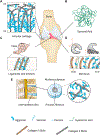
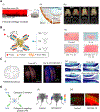
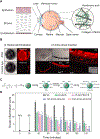

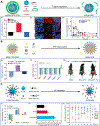
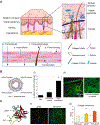
Similar articles
-
Cartilage penetrating cationic peptide carriers for applications in drug delivery to avascular negatively charged tissues.Acta Biomater. 2019 Jul 15;93:258-269. doi: 10.1016/j.actbio.2018.12.004. Epub 2018 Dec 6. Acta Biomater. 2019. PMID: 30529083 Free PMC article.
-
Charge-based drug delivery to cartilage: Hydrophobic and not electrostatic interactions are the dominant cause of competitive binding of cationic carriers in synovial fluid.Acta Biomater. 2022 Oct 1;151:278-289. doi: 10.1016/j.actbio.2022.08.010. Epub 2022 Aug 11. Acta Biomater. 2022. PMID: 35963518 Free PMC article.
-
Bioelectricity for Drug Delivery: The Promise of Cationic Therapeutics.Bioelectricity. 2020 Jun 17;2(2):68-81. doi: 10.1089/bioe.2020.0012. Epub 2020 May 21. Bioelectricity. 2020. PMID: 32803148 Free PMC article.
-
Cartilage-targeting drug delivery: can electrostatic interactions help?Nat Rev Rheumatol. 2017 Mar;13(3):183-193. doi: 10.1038/nrrheum.2016.210. Epub 2017 Feb 9. Nat Rev Rheumatol. 2017. PMID: 28202920 Review.
-
Polyion-induced aggregation of oppositely charged liposomes and charged colloidal particles: the many facets of complex formation in low-density colloidal systems.Chem Phys Lipids. 2008 Oct;155(2):63-73. doi: 10.1016/j.chemphyslip.2008.07.009. Epub 2008 Jul 30. Chem Phys Lipids. 2008. PMID: 18718458 Review.
Cited by
-
Single-Dose Intra-Cartilage Delivery of Kartogenin Using a Cationic Multi-Arm Avidin Nanocarrier Suppresses Cytokine-Induced Osteoarthritis-Related Catabolism.Cartilage. 2022 Apr-Jun;13(2):19476035221093072. doi: 10.1177/19476035221093072. Cartilage. 2022. PMID: 35491681 Free PMC article.
-
A 3D Tumor-Mimicking In Vitro Drug Release Model of Locoregional Chemoembolization Using Deep Learning-Based Quantitative Analyses.Adv Sci (Weinh). 2023 Apr;10(11):e2206195. doi: 10.1002/advs.202206195. Epub 2023 Feb 15. Adv Sci (Weinh). 2023. PMID: 36793129 Free PMC article.
-
Antimicrobial Photodynamic Inactivation Using Topical and Superhydrophobic Sensitizer Techniques: A Perspective from Diffusion in Biofilms.Photochem Photobiol. 2021 Nov;97(6):1266-1277. doi: 10.1111/php.13461. Epub 2021 Jul 8. Photochem Photobiol. 2021. PMID: 34097752 Free PMC article. Review.
-
Cationic-motif-modified exosomes for mRNA delivery to retinal photoreceptors.J Mater Chem B. 2024 Jul 31;12(30):7384-7400. doi: 10.1039/d4tb00849a. J Mater Chem B. 2024. PMID: 38946491 Free PMC article.
-
Development of Cytolytic Iridium-Complexed Octaarginine Peptide Albumin Nanomedicine for Hepatocellular Carcinoma Treatment.Int J Nanomedicine. 2025 Feb 25;20:2395-2409. doi: 10.2147/IJN.S502257. eCollection 2025. Int J Nanomedicine. 2025. PMID: 40027874 Free PMC article.
References
Grants and funding
LinkOut - more resources
Full Text Sources
Research Materials
